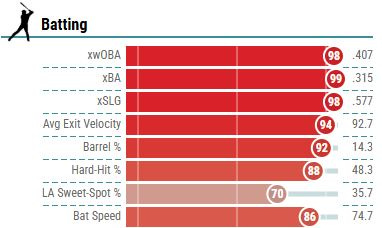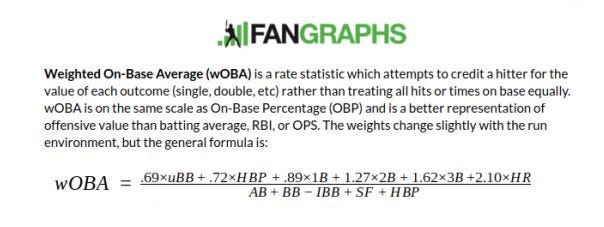Embracing Advanced Statistics in Baseball
Why Royals Data Dugout will blend traditional metrics with batted ball data, rate stats and more
If I told you Seth Lugo pitched 22 ⅔ innings, allowed 5 runs (4 earned), struck out 19, walked 3 and allowed 18 hits, how long would it take you, in your head, to calculate his ERA or WHIP?
Even though they’re fairly difficult to complete without a calculator – especially over larger samples – these “basic” stats are universally accepted. In fact, we use them in virtually every discussion about pitching.
They’re also perfect examples of why fans shouldn’t get the shakes every time an analyst rattles off spin rate, vertical break or whiff rate. These aren’t complicated calculations or even difficult to understand, but they twist some fans’ minds into a pretzel simply because they’re not widely used (yet).
Did the earliest introduction of what we now consider basic statistics cause the same strife? I can just imagine the outrage and outright confusion when, say, Cap Anson’s “batting average” was first printed in a newspaper in the late 1800s.
Which is why, as we continue wading into a new era of analytics and advanced statistics, it’s important for baseball fans to embrace them. Exit velocity, barrel rate, sprint speed, bat speed, OPS+, defensive runs saved, xFIP… they’re all useful tools in the arsenal of any baseball fan or analyst to better understand the game we love. They’re widely available (often for free). Their definitions are easy to find if not self-explanatory.
This isn’t an indictment on those who are reluctant to learn a new baseball dialect that sometimes sounds more like its own language. In many instances, I get it – the formula for wOBA (weighted on base average) looks more like a nuclear code than an all-encompassing measurement of offensive value.
My goal with Royals Data Dugout is not to alienate “old school” fans. It’s not to talk down to those who prefer batting average, fielding percentage and classic counting stats. If I’m being honest, there are many times I find myself struggling to understand the context of a cleanup hitter’s HR/FB ratio or a closer’s SIERA in relation to other players around the league.
Really, it’s not about the statistics themselves. At all. It’s about adapting to new ways – better ways – to evaluate players and teams. My work will weave traditional stats with new-age ones: on-base percentage with xwOBA, fly-ball rate with launch angle, barrel rate with slugging percentage, defensive runs saved with errors committed and, yes, ERA with FIP, among others. When possible, I’ll do my best to explain what these numbers mean and, perhaps more importantly, why I’m using them.
If you aren’t sure what something means, or even if you feel I’m going overboard with the numbers, I hope you’ll comment on the post, respond to the tweet or reach out directly with questions, comments or feedback. This Substack is intended to educate, not intimidate. Let’s better understand baseball — together.
By the way, Lugo’s ERA would be 1.59. Shoutout Seth Lugo.






I'm not much of a baseball guy, but I enjoy good sports analysis, especially when involving analytics. I think communicating and incorporating analytics into popular sports analysis has been a challenge for us data nerds, but I think clear and simple communication can bring progress into the area. I'm looking forward to reading how you do that through your newsletter.